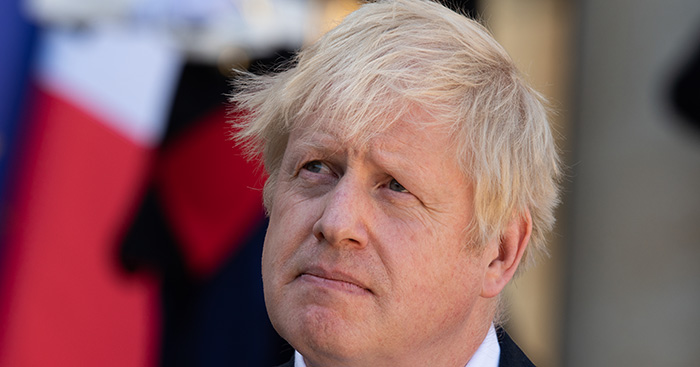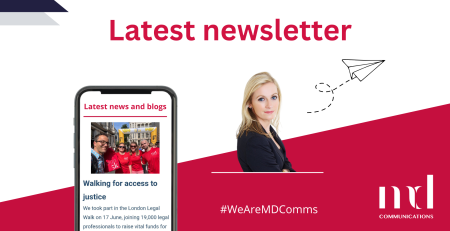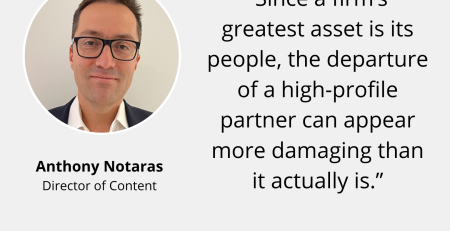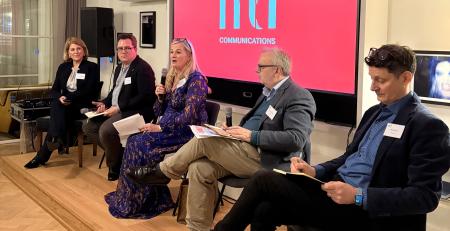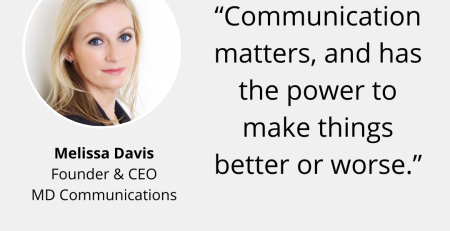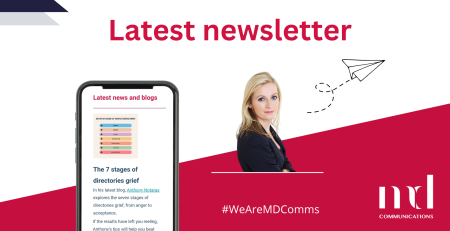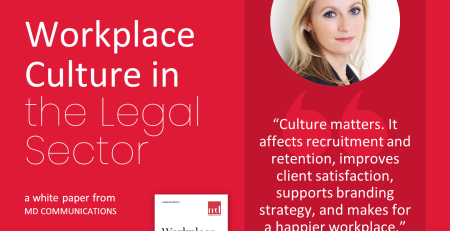Fizzgate? Partygate? Call it what you want, but the latest revelations about the Prime Minister’s attendance at rule-breaking gatherings shine an unflattering light on those whose job it is to manage reputations at Number 10, writes our Founder and CEO, Melissa Davis.
The last thing the Partygate saga needed as it continued to bubble along was any more fizz – but that’s precisely what we’ve now got.
As we were all waiting – and waiting and waiting – for the highly anticipated Sue Gray report, another bombshell dropped, courtesy of the excellent Paul Brand, the political editor at ITV.
Four photographs have emerged of the Prime Minister raising aloft a glass of what appears to be champagne, closely surrounded by Number 10 staff, in the foreground on a table are what appears to be several empty bottles of wine and spirits.
The reason for this soiree, a leaving do in honour of the then Director of Communications, Lee Cain.
The number of people is important. In addition to the nine people in the photograph, including the PM, we can also add the photographer to the gathering. So, we’re at 10 people already, and according to ITV News, that doesn’t include other attendees at the event – dare we now call it a party?
So, there are now two questions and two enormous challenges for the PM and his communications team that they hoped they’d never have to answer but which they most certainly need to answer now.
In the spotlight
Firstly, they now must explain why the PM was even at this event. The law at the time, 13 November 2020 to be precise, clearly stated that only two people from different households could mix indoors at any one time.
Yet, along with the other nine people, at least two bottles of sparkling wine of some form, four bottles of wine, and half a bottle of gin can also be seen near the PM. Even for his staunchest supporters, claiming that amount of people and booze is a ‘work event’ will be one heck of a stretch, however many red boxes are in the picture.
But it’s the second question which is even more dangerous for the PM.
He was explicitly asked about this event by Catherine West, the Shadow Foreign Minister, in the House of Commons. Her exact words were to enquire “whether there was a party in Downing Street on 13 November”.
The PM was categorical in his reply. “Mr Speaker, no. But I’m sure that whatever happened, the guidance was followed, and the rules were followed at all times.” he told the House.
And that line has been repeated ever since about this party and other reports of parties, work events or gatherings; call them what you will.
‘No rules were broken’. Ministers, MPs, spokespeople and Boris Johnson supporters have all trotted out the same line. As the headlines emerge and the photos keep coming, you must question why that line would be taken from the beginning when it clearly wasn’t right.
Uncertain ground
The PM faces the toughest accusation – that he misled the House. The evidence shown to the court of public opinion looks like he lied.
Everyone else who trotted out that line on behalf of the PM must now be looking at the pictures and realising what has happened.
From a comms professional viewpoint, you can’t stop shaking your head with utter disbelief at whoever came up with the argument in the first place.
They must have known that the event took place. The photographs are not taken surreptitiously, those working in Lee Cain’s communications team must have seen the photographer and known that they existed.
Did they honestly expect that they would never emerge in a world as unpredictable as politics, where backstabbing is an occupational hazard?
What on earth were they thinking? The obvious conclusion is that they took a reputational gamble and put all their money on the public’s interest in Partygate fading to nothing.
This evaporation of interest and an effective change of narrative might have occurred under normal circumstances; scandals pass, and they will have been reassured by parts of the media assuring them that they would control the public interest. Hence headlines such as ‘Don’t they know there’s a war on’ and grainy pictures of people having a curry under very different circumstances.
But these are not ordinary times. Every man, woman, and child were restricted, by law, on their freedoms. Weddings and funerals were missed, and loved ones were isolated. Everyone was affected. This is not to mention the estimated 170,000 who died during the pandemic, within a month of testing positive for COVID-19.
They managed to delay; every time they said ‘wait for the Sue Gray report’ or ‘wait for the police investigation to conclude’, everyone in the country moved one step closer to moving on to something else, but the impact on every person’s life was too great for it just to disappear.
To call it a risky tactic would be an understatement. It was riddled with risk from the first time anyone said let’s try and delay and continue to deny. It was a ticking time bomb and a massive lesson for communicators and anyone dealing with difficult issues.
Reputations take years to build and seconds to ruin. If people can’t believe a word you say, why would they listen? Authenticity and integrity are everything, even in politics. We may be living through a period when the truth is being stretched further than ever before, but it will still come back and bite you at some stage.
Then, of course, the very well-known question is: Should you ever lie to the media?
Well, perhaps this should be rephrased. Should you lie on the record (or off it) to any of your stakeholders?
The advice is simple: no. The longer explanation is you never should especially when there’s a chance someone can somehow prove that you’re not being truthful. Why would you?
It’s a cavalier attitude at best. Number 10 thought they wouldn’t be found out.
They have been. The PM has been. And therefore, everyone else who attached their credibility to ‘the line’ has also been caught out.
Advisers surround the PM. He is not a lone wolf. As a comms adviser, it’s not unusual to deal with difficult circumstances and be on the defence 24/7, but there’s a fine line when you are part of a machine that trots out lies and asks others to parrot the message.
This picture paints far more than a thousand words. It calls into question everything that has previously been said about this event.
Who now would trust anyone saying that it didn’t happen when the PM is there for all to see, surrounded by booze, more people than the rules allowed, and with a glass of bubbly in his Prime Ministerial mitt.
My guess is some at Downing Street will take the strategy to double down and retreat into deflection, denial and further delay. It has become their trademark. This time, however, some will surely realise the game is up.
Coming up with further weak excuses papers over an already busted wall of lies, it won’t stick. My advice would be very straightforward. They’re in a hole of their own making. It’s time to stop digging/lying/making it worse.


